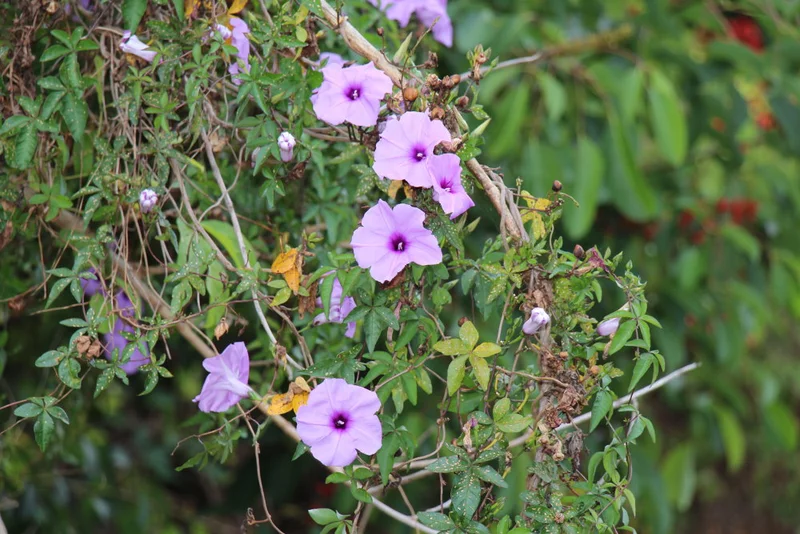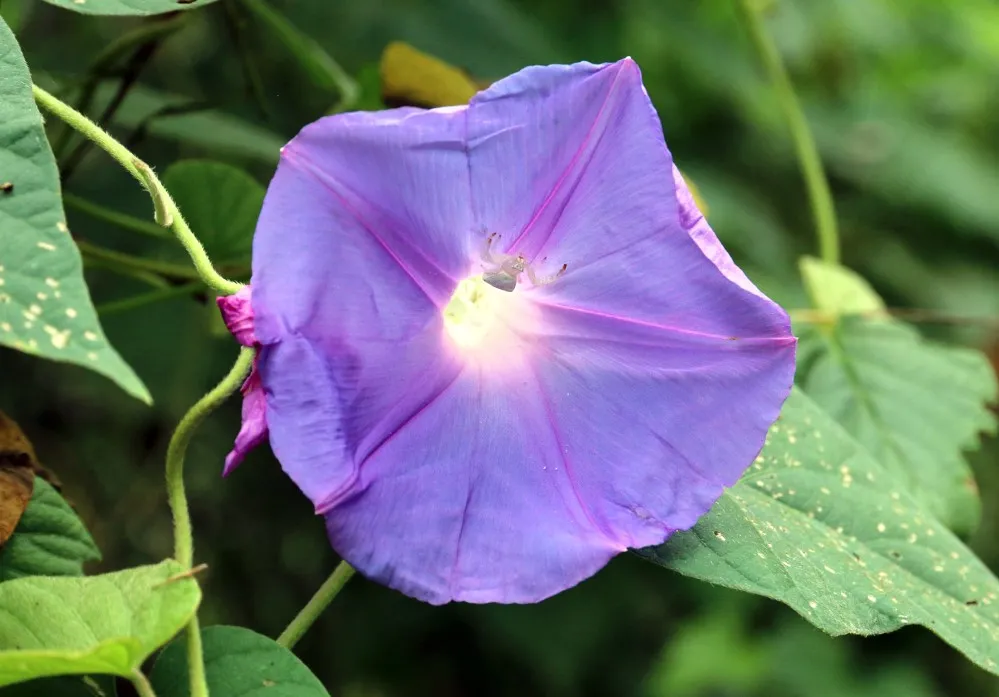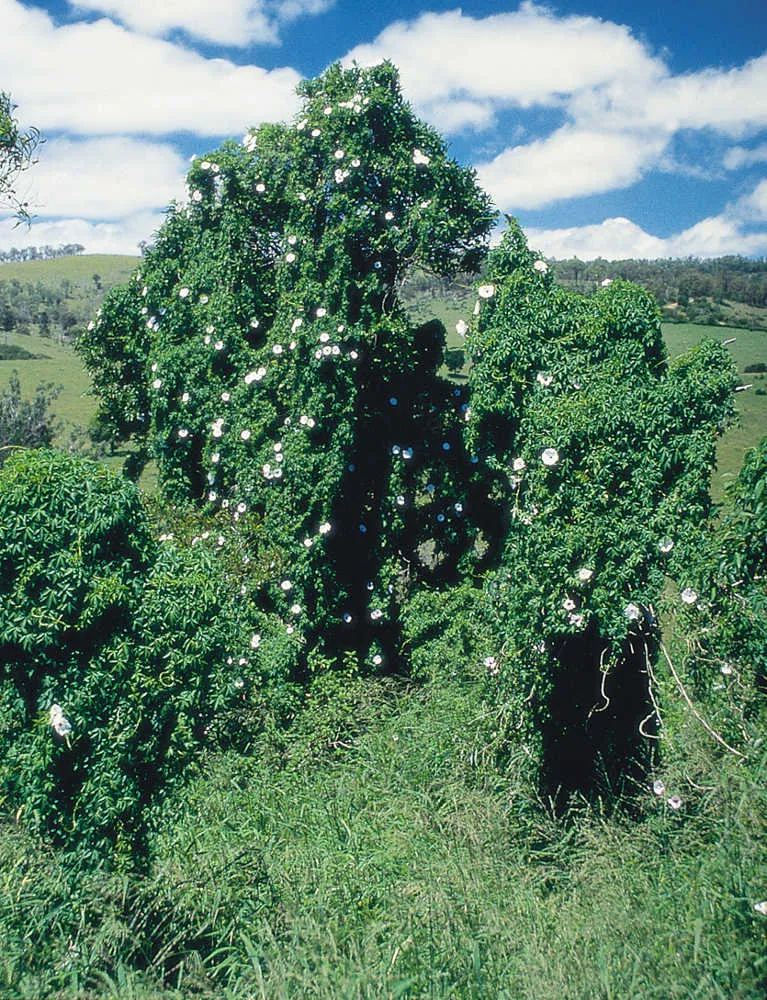With a snip, fight this rampant vine weed
With this rampant weedy vine’s flowers on full show, now is the time to defend our region’s natives from its smothering embrace.

With this rampant weedy vine’s flowers on full show, now is the time to defend our region’s natives from its smothering embrace.
Coastal morning glory (also known as mile-a-minute) and its hinterland cousin, blue morning glory, are now in full bloom: perfect targets for identification and management.

The flower of the blue morning glory vine, which is more prevalent in hinterland areas of our region. Image: Queensland Government
Both vines grow rapidly to smother our native trees, shrubs and groundcovers, depriving them of sunlight and nutrients.
The distinctive funnel-shaped flowers make both species easy to identify as they overrun trees across the region.

Blue morning glory overtakes trees, shrubs and groundcovers. Image: Queensland Government
Both vines can be spread by plant parts and seeds.
To manage these vines in your area that are growing up trees and not along the ground, cut the stem at the base and remove all roots.
If they are growing along the ground, pull them out at the roots and remove the whole plant from the ground so it doesn’t regrow from broken stem fragments.
Find out more about managing invasive plants and animals in our region on Council’s website.
WEED IDENTIFICATION GUIDE
Coastal morning glory (Ipomoea cairica)
- Leaves are alternate, hairless, 3-10cm long, 3-10cm wide, divided into 5 or 7 narrow lobes like fingers of a hand, borne on stalks (i.e. petioles) 2-6cm long
- Flowers are funnel-shaped, pink-lavender with deeper-coloured throat, 3.5-6cm long, 6-8cm wide
- Seeds are dark brown to black, 5-6mm long
- Habitat: prefers coastal areas and common along riverbanks and foreshore areas.
Blue morning glory (Ipomoea indica)
- Vine with slender stems up to 7m long
- Leaves are dark green, broadly heart-shaped, 3–5 lobes, 4–17cm long, 3–16cm wide, on leafstalk 2–18cm long
- Flowers are striking blue-mauve, funnel-shaped, with groups of 3–12 petals fused to 8cm size, short-lived, readily replaced as they die
- Seeds are angular, blackish, to 4mm long
- Habitat: common along roadsides and forest edges.